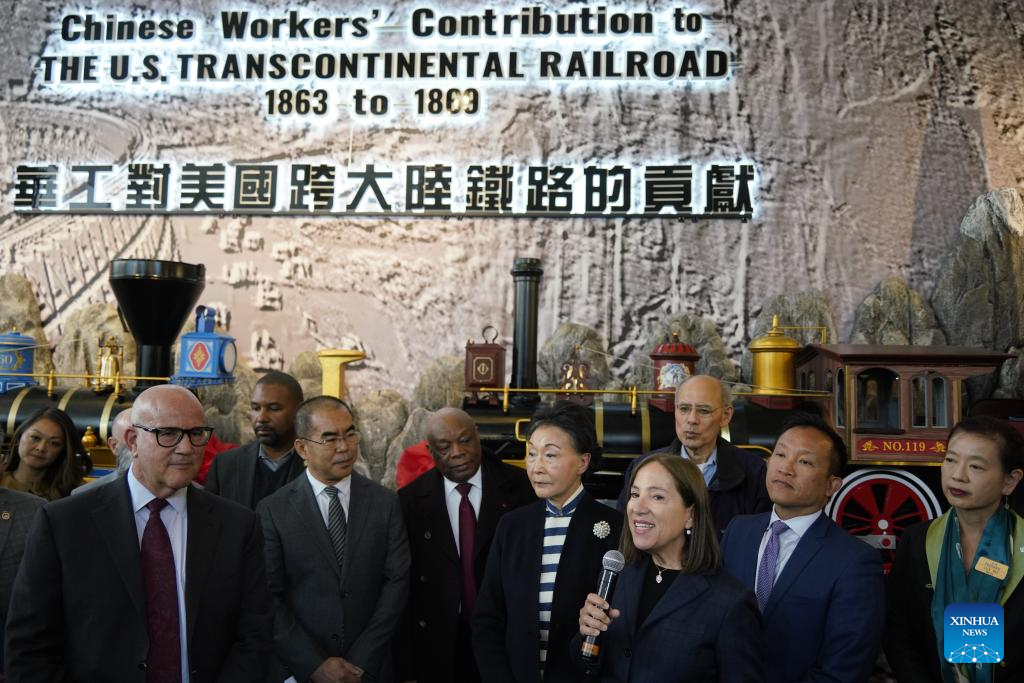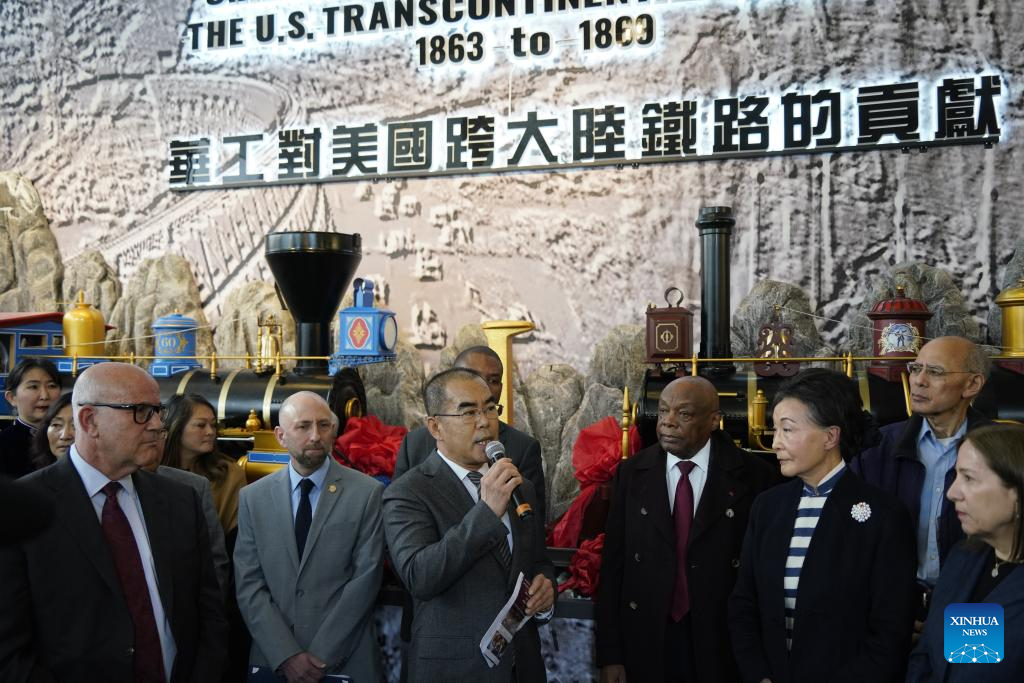
California's Lieutenant Governor Eleni Kounalakis (3rd, R) addresses the opening ceremony of a history center, built to commemorate Chinese railroad workers who completed the Transcontinental Railroad on May 10, 1869, in San Francisco, California, the United States, May 10, 2023. (Xinhua/Wu Xiaoling)
SAN FRANCISCO, May 12 (Xinhua) -- Standing side by side, U.S. California's Lieutenant Governor Eleni Kounalakis thanked Florence Fang for "her vision to put a China light on a part of American history and of Californian history" at the opening ceremony of a history center in San Francisco's Chinatown on Wednesday.
The center, founded by Fang, was built to commemorate Chinese railroad workers who completed the Transcontinental Railroad on May 10, 1869.
The railroad, which reduced coast-to-coast travel time to a week from months, has reshaped the fractured country in the wake of the civil war.
"Without Chinese railroad workers, it is impossible to complete the western part of this great railroad. As a Chinese American, I feel a personal obligation to do something for the unsung heroes," said Fang, also a Chinese-American community leader in the San Francisco Bay Area.
The construction of the Transcontinental Railroad relied heavily on human labor. Historians believe that between 12,000 and 20,000 Chinese workers were recruited to the workforce.
The Chinese workers, comprising 80 percent of the workforce in the west by 1867, are considered indispensable for their work ethic and endurance, according to a resolution passed in 2019 by the San Francisco Board of Supervisors to honor the Chinese workers.
"You see the track as it clings to the cliffs of the Sierra Nevada. You see the snow shelters. You have to ask yourself how was this built?" said Kounalakis.
"It was the strength, the bravery, the courage, the sweat, the tears, and sometimes the lives of the Chinese immigrants who built the most treacherous, difficult part of the transcontinental railroad," she said, giving an answer that won applause from the guests.
But the Chinese workers who had built the railroad were all but invisible at the inauguration ceremony. Their contribution has been obliterated in American history, and they were prejudiced against because of the Chinese Exclusion Act.
Discrimination and hate crimes against Chinese communities, which happened in the past, unfortunately, persist nowadays, said Pan Qingjiang, Chinese deputy consul general in San Francisco.
A recent national survey conducted by Columbia University and the Committee of 100 showed that nearly three out of four Chinese Americans have experienced racial discrimination in the past 12 months. Fifty-five percent of respondents from across the United States worried about their safety relating to hate crimes and harassment.
Shamann Walton, member of the San Francisco Board of Supervisors, believed the center would help correct the omission of the past and remember the legacy of the Chinese builders. "Let us be inspired by these workers to apply the spirit of perseverance and ingenuity to fixing today's challenge."
Fang hoped that the history center would also contribute to reducing and stopping discrimination and hate against Chinese, and to enhancing mutual understanding and friendship between the two peoples. ■

Pan Qingjiang (C, front), Chinese deputy consul general in San Francisco, addresses the opening ceremony of a history center, built to commemorate Chinese railroad workers who completed the Transcontinental Railroad on May 10, 1869, in San Francisco, the United States, May 10, 2023. (Xinhua/Wu Xiaoling)



